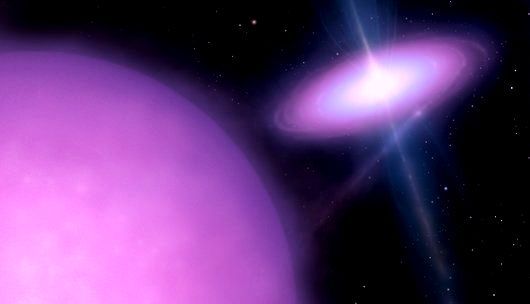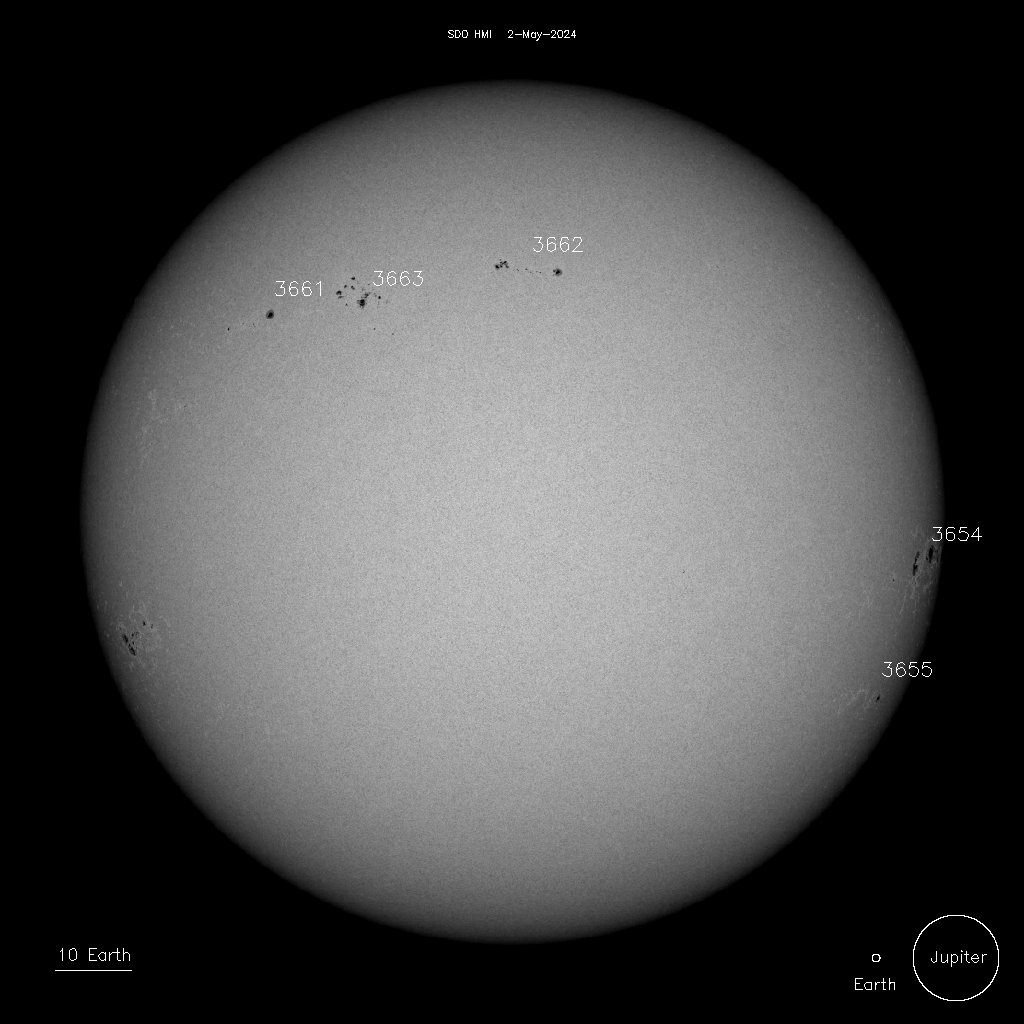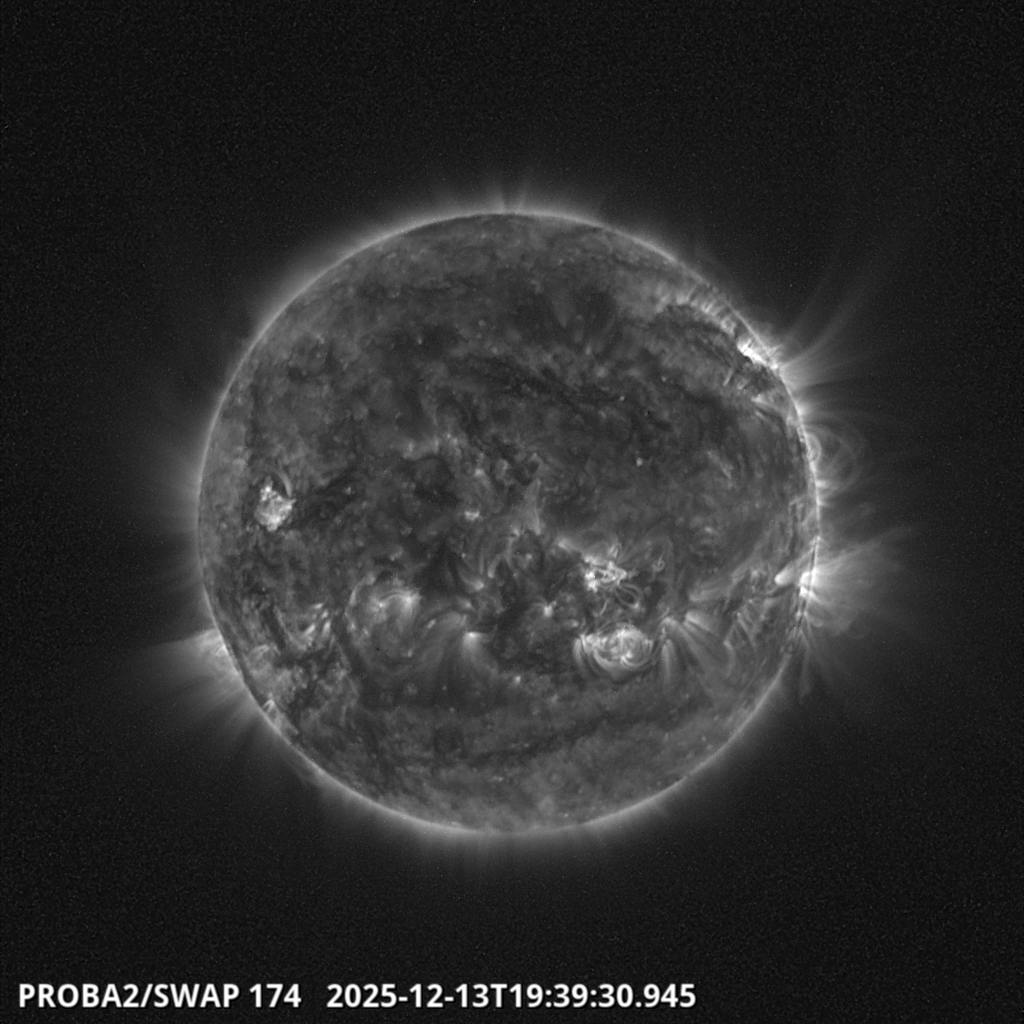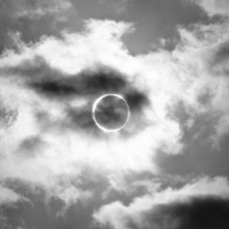A Ghost In The Shell: The Mystery Of The LMXB SS433
In the 20 years since the discovery of the unusual properties of SS433, a mystery object lurking inside the supernova remnant W50, over 100 papers have been written attempting to reveal its true identity. This object first caught my attention when on a work placement at the Rutherford-Appleton Labs, being inspired by Prof. Barry Kellet of RAL Space after giving an overview of this curious object (whilst also inspiring me to purchase a copy of ‘Exploring The X-Ray Universe‘, something which I highly recommend). For years this seemingly bizarre object remained an object of fascination for many astronomers, spitting out huge amounts of X-rays, gamma-rays and radio waves, but after decades of study, it appears to be a rather amazing binary system: the first object designated to “microquasar” status (although technically it is a cataclysmic variable, specifically a low mass X-ray binary, LMXB).

Fig.1: X-ray binary star system SS433. This system is believed to be comprised of a neutron star (upper right) in mutual orbit with a normal star (lower left). The neutron star is extremely dense and its gravity draws gas from its companion. This forms an accretion disc (blue/purple) around the neutron star that emits X-rays as it is heated near the star. Two high-speed jets (blue) are emitted from the poles of the neutron star. The jets and disc wobble with a 164-day cycle. The neutron star is thought to be the remnant of a star which exploded around 40,000 years ago, forming the supernova remnant W50, in which this system is located (Credit: Mark A. Garlick).
SS433 is one of the most unusual and perhaps most famous binary system ever studied. Binary systems, as the name suggests, are made of of two stellar objects. In SS433, one is a fairly normal but slightly overweight star (the exact mass has not, as yet, been fully established) that is shedding its excess gas to its companion – either a black hole or neutron star, acting like a small model of those extragalactic powerhouses, the quasars, but after several confusing years of study it is, without doubt, an object inside our own Milky Way galaxy.
Before it hit the big time though, SS433 was first observed in 1975 by an obscure young astronomer, Larry Krumenaker, who designated it K16. He published the information for readers of the Publications of the Astronomical Society of the Pacific; little did he know then that the great writer Arthur C. Clarke would name this as one of the seven wonders of modern astronomical discovery (a designation agreed upon by perhaps a large section of the astronomical community). However, much to Krumenaker’s disappointment, K16 would be redesignated SS433 when Case Western Reserve University astronomers Bruce Stephenson and Nick Sanduleak listed K16 as the 433rd object in their catalog of objects with emission lines in their spectra. Thus, Stephenson-Sanduleak object number 433 was here to stay.
The story of SS433 begins early in 1978, with P.G. Martin of the University of Cambridge working with P.G. Murdin and D.H. Clark of the Royal Greenwich Observatory, conducting a survey at the Anglo-Australian Observatory. The UK based trio were looking for stars with emission lines at the sites of newly found radio-wave emitting objects. This led them to a rather interesting object with a bizarre spectrum, that turned out to be the already catalogued SS433. However, the team was fascinated to find that the spectral lines of this object could not be identified with any known chemical elements: the game was under way to break open the mystery of SS433!
In August of the same year, a team led by UCLA based astronomer Bruce Margon focused their attention on SS433. Margon et al. concluded that this object does not behave as first thought, they found that the emission lines actually consisted of a pair of lines. One blue shifted. One red shifted. As they studied SS433 over time, these lines moved and crossed each other a period of approximately 160 days.
Such a shift in a spectrum’s lines is not unusual. All stars do it. A moped’s engine does it as it races past you. It’s called Doppler shifting. When an object is approaching the observer, wavelengths of sound or light are shortened; that makes the pitch of a car’s horn go up, and in the spectrum of a star it makes the spectral features move a bit “blueward”. When the object is moving away, the light waves get “redder”. And as Doppler also noted, the faster things move, the more extreme the shift.
However, pairs of lines crisscrossing each other surprisingly unusual! Furthermore, nobody could fathom what chemical elements were producing each individual emission line. And with no reference to compare the lines to, astronomers couldn’t measure how fast SS433 was moving. It was now truly a time to scratch heads.
In 1979, following announcements of this unusual object, astronomers in Oregon found that SS433 varied in brightness. Harvard College Observatory’s archive of photographic plates showed that SS433 had showed the same 160-day variation in brightness over the previous 50 years.
About the same time, astronomers based in Arizona found that the pairs of lines were actually triplets. Astronomers realized that these were normal hydrogen lines — that is, lines produced by the “glow” of hydrogen in SS433, but with a difference. One line stayed in place, and didn’t shift back and forth. But this line was flanked by grotesquely shifted and shifting lines on either side of it! No one had ever seen such spectral lines before. The shift meant that whatever was producing the outer lines must sometimes move at one-fourth of the speed of light, and at other times slow to zero! The only good interpretation was that hydrogen atoms were being ejected from a central object in jets.
The gas in the jets must move at tremendous speeds, and must rotate around the centre over about a five-month period. This jet rotation period gave rise to the object being colloquially known as ‘the star that was coming and going‘.
At this point, astronomers had learned that SS433 consists of an object of considerable mass, with incredibly high-speed gases that change speeds in a periodic manner. Some aspect of the system causes brightness and colour variations. The basic picture of SS433 was now complete, but the details were still hazy. Astronomers had learned all they could learn about SS433 from visible light.
As you may be well aware, visible light is but a mere fraction of the total electromagnetic spectrum. Ken Johnston, based at the Naval Research Laboratory, Washington D.C., observed a radio-wave-emitting object in the sky at the exact position of SS433. Johnson found the radio emission to be varied with a period of ~7 days, and hypothesised it to be a radio-bright compact object. Thus, Johnston’s work allowed astronomers to take the first steps to producing a more detailed study of SS433’s physical arrangement.
It wasn’t until 1984 that astronomers noted SS433 lies near a dim and old supernova remnant known as W50. A supernova remnant is the structure resulting from the gigantic explosion of a star in a supernova explosion. Some features in SS433 are aligned with those of W50, showing the winds from SS433 are affecting the remnant, which is at least 15,000 light-years away. SS433 and W50 probably are all that’s left of a once-normal binary-star system.

Fig.2: Gray-scale distribution of the spectral index between 327.5 and 1465MHz. Flatter spectra are darker (e.g., southwest rim) while steeper spectra are lighter (e.g., east lobe). The circle shows a model as suggested by a fit to the central regions of W50. (Credit: Dubner, G.M. et al. (1998) A High-Resolution Radio Study Of The W50 SS433 System & The Surrounding Medium. The Astronomical Journal, 116 pp.1842-1855)
Today we know that SS433 consists of a pair of jets on opposite sides of a central system. This system consists of a compact object , either a huge black hole, a regular black hole, or a neutron star, orbiting every 13 days around a bloated star that dumps gas toward the compact object. The gas temporarily resides in a thick, slightly wobbly accretion disk that causes a 6- to 6.5-day variation in radiation and is the source of the majority of the visible light seen as a “star” on photographs.
These jets flow more or less at right angles to the accretion disk. The jets and disk are not perfectly aligned with the orbit of the two central objects, so they wobble like a spinning top, looking for all the world like a berserk two-nozzle lawn sprinkler. The jets maintain their orientations for some distance, even affecting the surrounding material of W50.
The general picture has been fairly clear for some time, but there was still a lot of uncertainty about what the objects in SS433 are! Todd Hillwig and Douglas Gies, two Georgia State University astronomers, led a team of observers to an answer.
As the two objects orbit each other, they produce an eclipse every 13 days, causing the system’s overall brightness to dip a little. Since the disc surrounding the compact object provides most of the system’s visible light, the dimmer object must be covering up only part of the disk. Even so, the stellar companion’s light is still usually overwhelmed by that of the disc.
However, during times when the jets’ own 162-day wobble puts the disk more below the star than usual as seen from Earth, the faint star might just send enough light toward us for instruments to record. This clockwork arrangement occurs only about twice a year. By observing in a part of the spectrum in which the disk and jets produce fairly little energy, the majority of the light must be from the companion star. By application of the Eddington luminosity formula, this could perhaps be proof that we are dealing with either a low-mass black hole or a high mass neutron star as our compact object.
The newly uncovered spectrum of the bloated star appears to be that of an old A-class supergiant: a large, hot star about 11 times as massive as the Sun. Since the disk and compact object combined are three times as massive as the Sun, Hillwig and Gies believe the compact object is a low-mass black hole. Personally, I believe this to be a little optimistic!
Thus, the mystery of SS433 – a mystery presented by a young astronomer almost three and a half decades ago – continues…
In my eyes, indisposed. In disguises no one knows. Hides the face, lies the snake.
Journal References:
- Crampton, D.; Hutchings, J. B. (1981) The SS 433 Binary System. The Astrophysical Journal, 251 (1) pp. 604-610.
- Margon, B. (1984) Observations Of SS433. Annual Review: Astronomy & Astrophysics, 22 (1) pp.507-536.
- Gies, D.R., McSwain, M.V., Riddle, R.L., Wang, Z., Wiita, P.J., & Wingert, D.W. (2002) Spectral Components Of SS 433. The Astrophysical Journal, 1069 (2) pp. 1069-1083.
Suggested Further Reading:
- Hellier, C. (2001) Cataclysmic Variable Stars: How & Why They Vary. Springer-Praxis Publishers, 1st Edition. London, United Kingdom.
- Seward, F.D.; Charles, P.A. (2010) Exploring The X-Ray Universe. Cambridge University Press, 2nd Edition. Cambridge, United Kingdom.















Reblogged this on digger666.